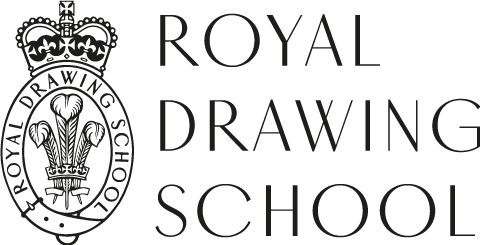Drawing and Sculpting from Home: Capturing Movement
Does an action pose caught mid-movement just look frozen, or alive?
This Easter Holiday, we are pleased to be offering some in-studio sculpture as part of an intensive five-day course: The Language of Movement in Sculpture. Here our tutor Marcus Cornish describes how we can begin to experiment with this from home.

Our Easter course will examine the history and development of movement in sculpture. We will look at its many manifestations over time and in different cultures; from the monumental muscular flow of the classical Greek and the breadth of Chinese sculpture, to the force in some Japanese sculpture, the bubbling excitement of the Late Italian Renaissance, to the vigour of Rodin in France and the vibrant fizz of light in the 20th century all over Europe.

Each day we will make a figure sculpture supported by drawing that addresses a new approach, giving life and energy to the static material of sculpture. The model will at times be still or will move around the studio for students to draw and then sculpt the figure. This course presents a whole history of different speeds and sensations of movement which over the week will amount to a rich diversity of perceptions, interpretations and techniques.

Exercise: capture movement in drawing and sculpting from home
Scintillating colour in contrasts, a rip, a splash, the illusory ghost of fugitive light, an unfurling line; these are a small selection of ways to convey movement. Movement as an issue in art is fantastically complicated and also incredibly simple, a vibrantly rich, diverse, bright topic in every culture. As an idea, it resides as much in feeling it in the body and memory in the mind, as it does in the eye. It challenges concepts of time; as much about anticipation as an unfurling action. Does an action pose caught mid movement just look frozen or alive?So, what to do?
- Working with a model (a family member, friend, well-trained dog!), ask them to go through a series of repeated movements, eg swinging an arm around in a circle, spinning slowly around, leaning forwards and backwards.
- Carefully watch these movements for five to 10 minutes (a long time!) and let the series of movements consolidate into a whole in your mind - absorb it.
- Then with any drawing apparatus you have available, eg. brush, graphite stick or carpenters pencil in your hand, shut your eyes and imagine the repeated movement you have just been watching; participate in it, emulate it with your body and hand in repeated motions for as long as you can, without actually drawing anything on paper yet.
- Now with your eyes open, perform the action on the paper. Try to find the whole expression you have practiced when drawing the figure you see.
To sculpt:
- You can do the same as the above with a toothbrush or suede brush on a sheet of wet clay (air drying or ceramic clay) and when finished pour some plaster of Paris onto it. The plaster panel will be a three dimensional, sculptural drawing.
We would love to see your attempts at capturing movement in drawing and sculpting - please do tag us on social media using #RoyalDrawingSchool. You can also find out what other upcoming courses Marcus is teaching on, including Sculpture and Form in the Summer Term.



